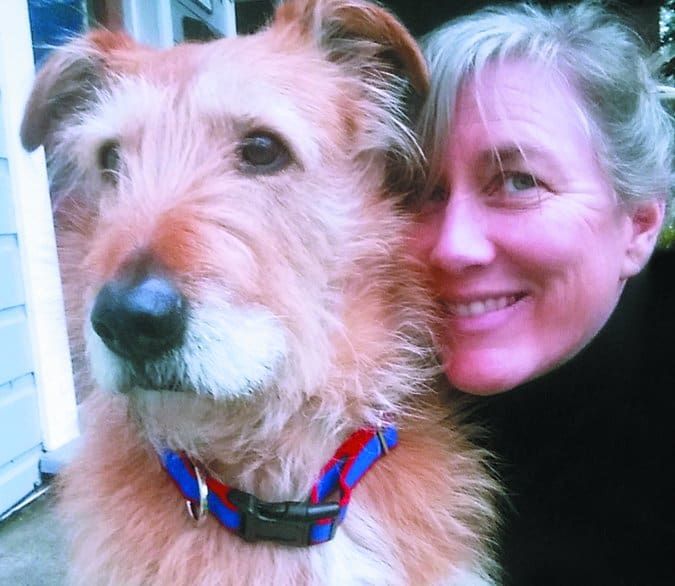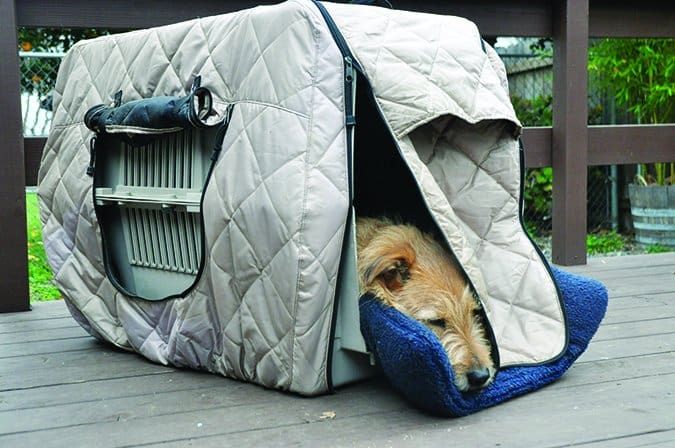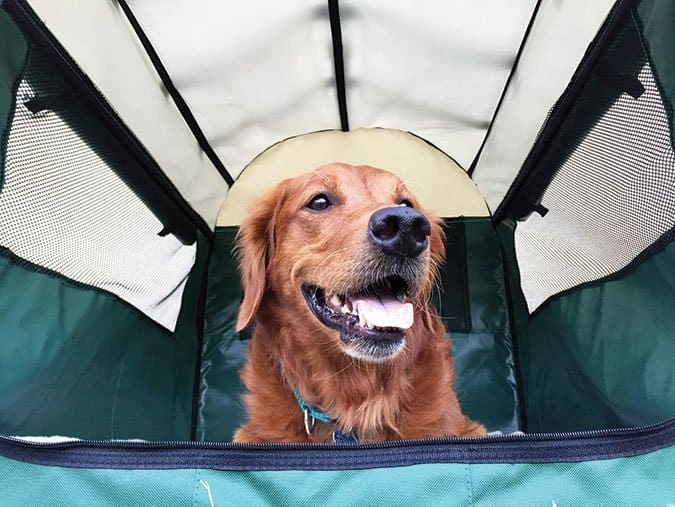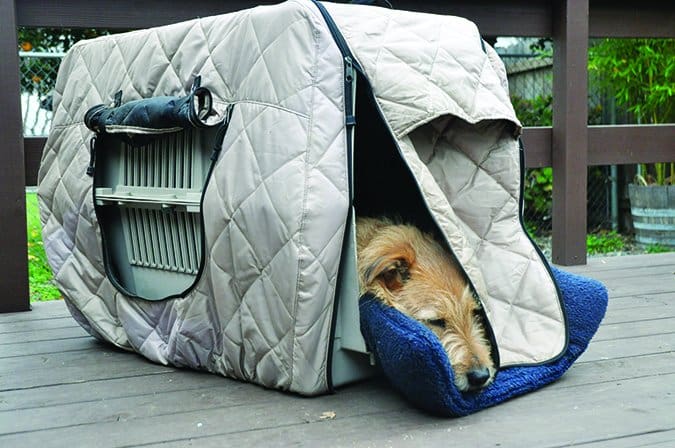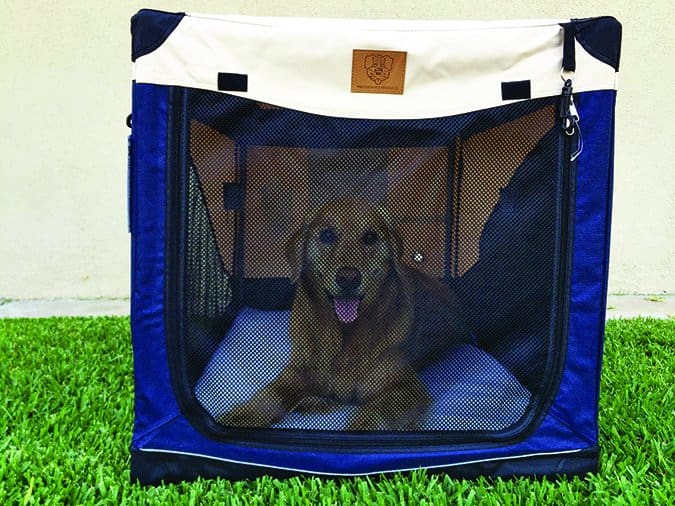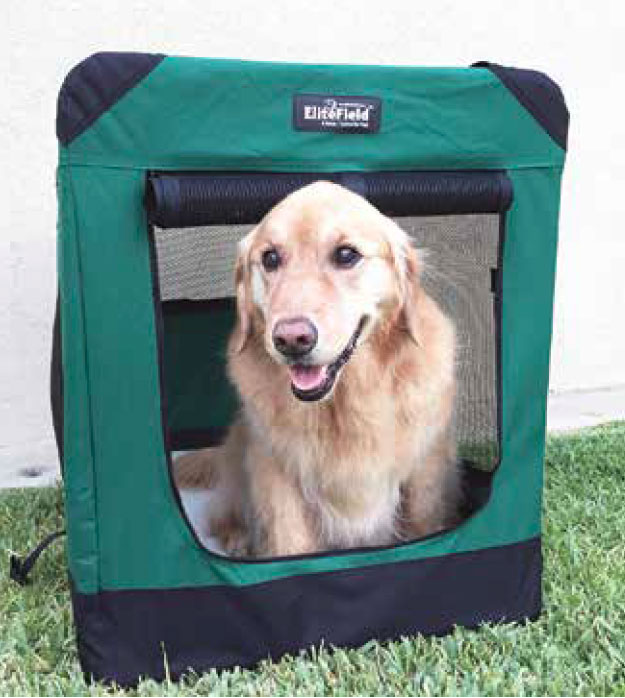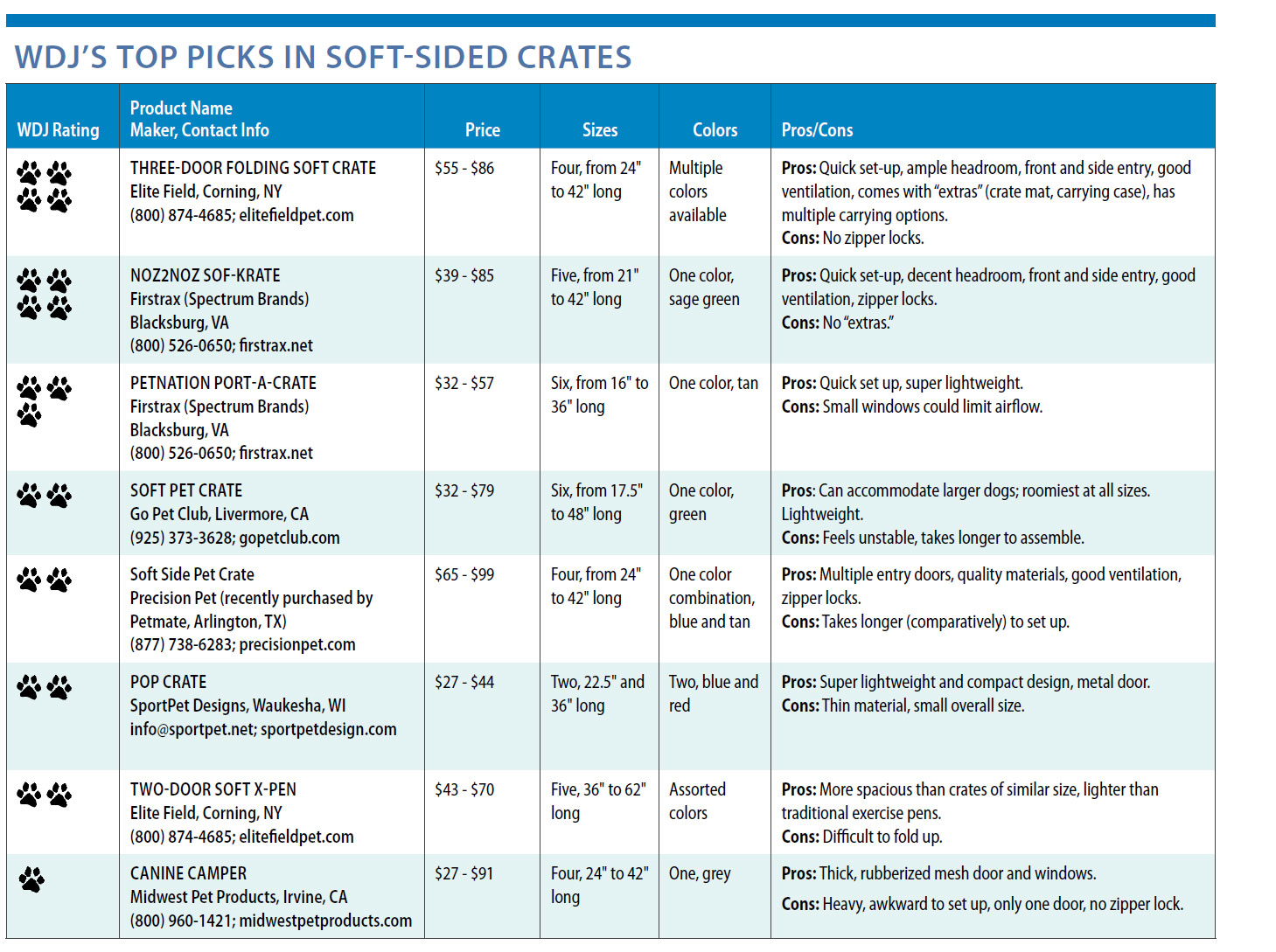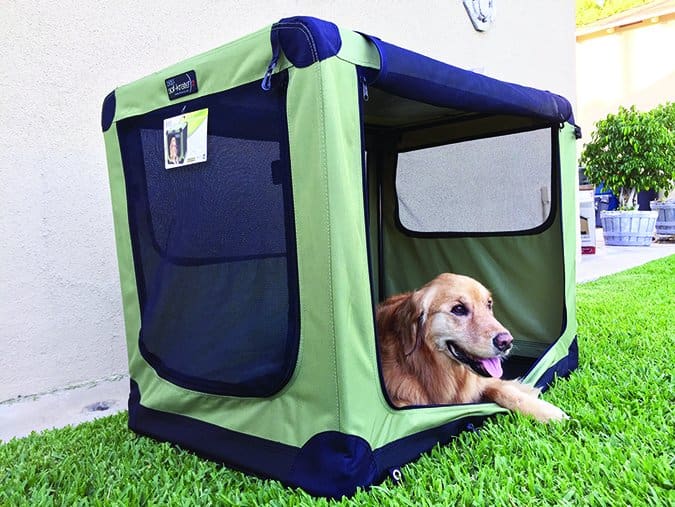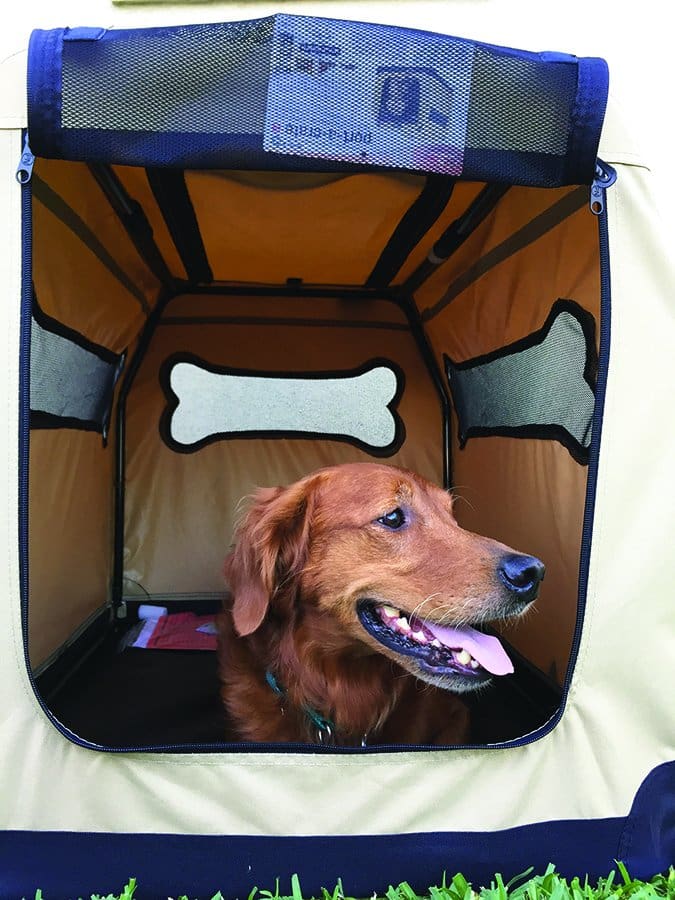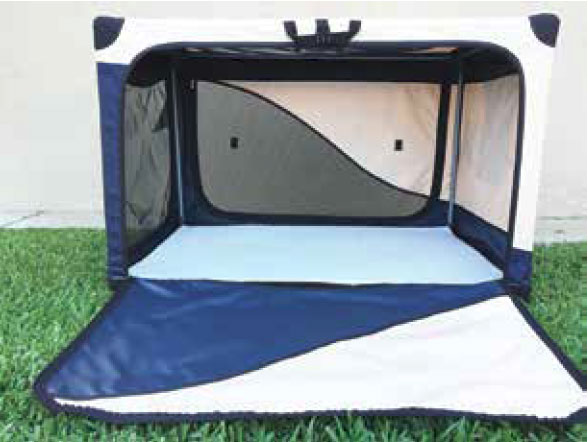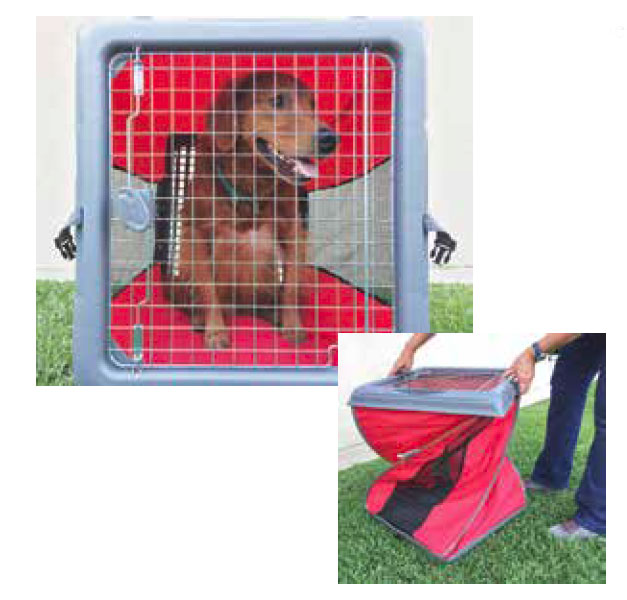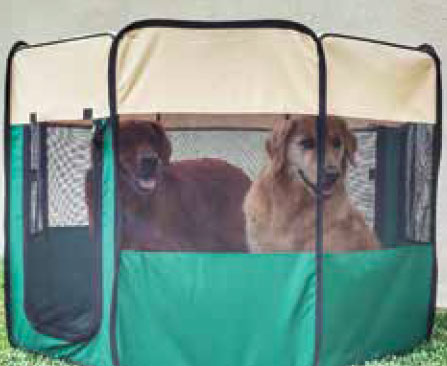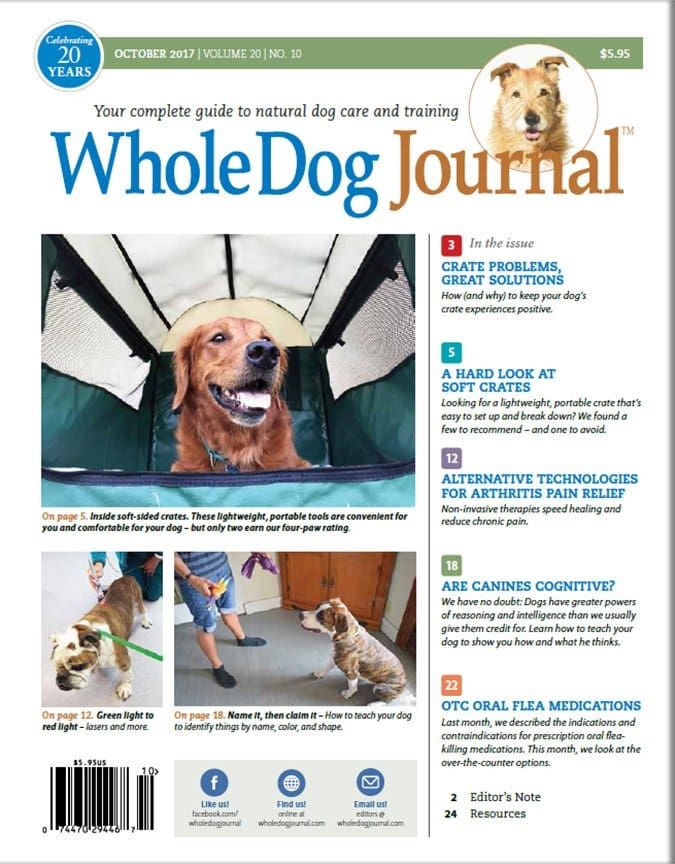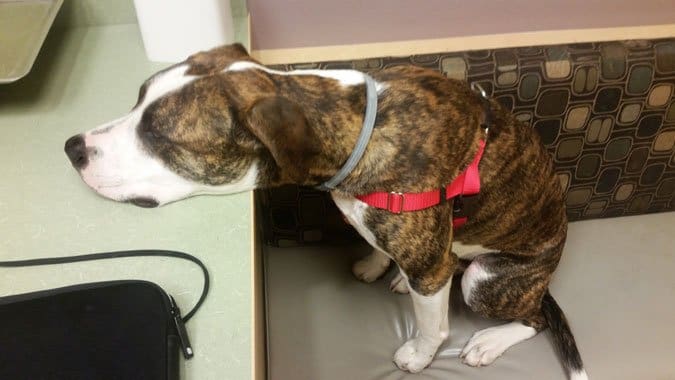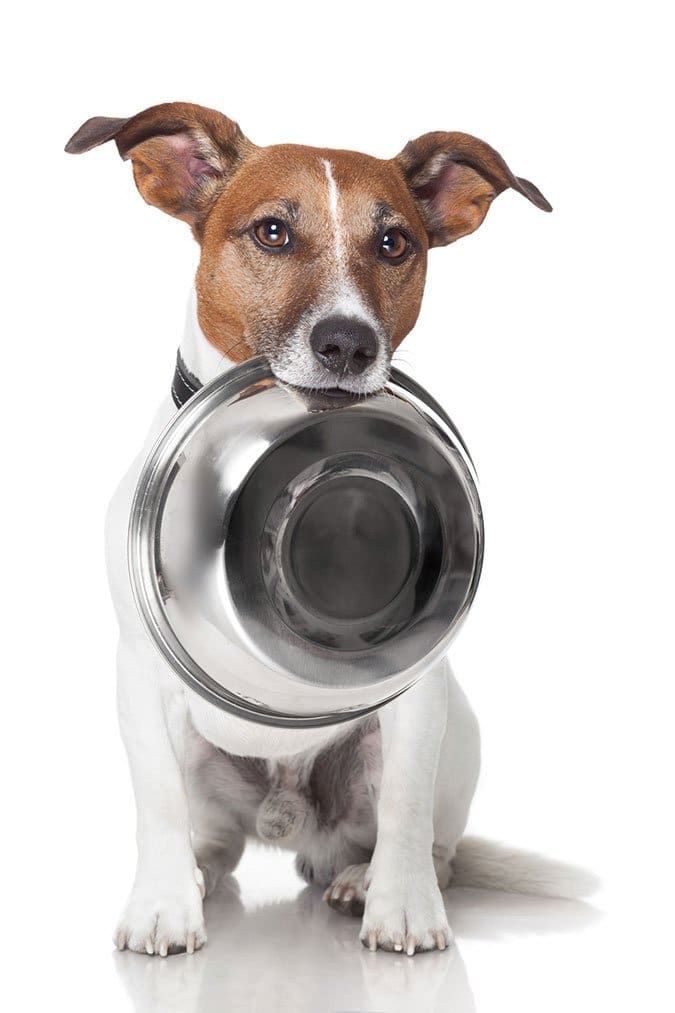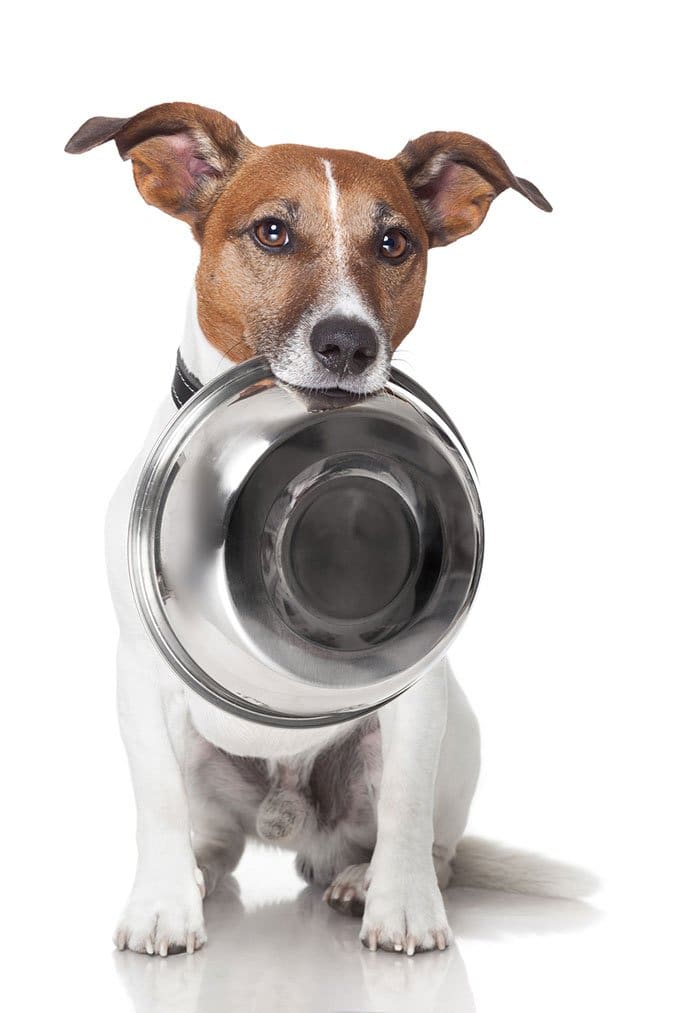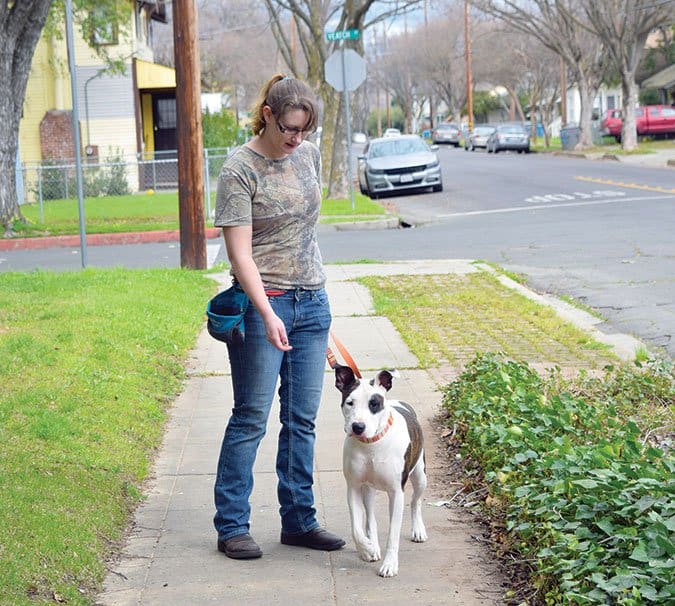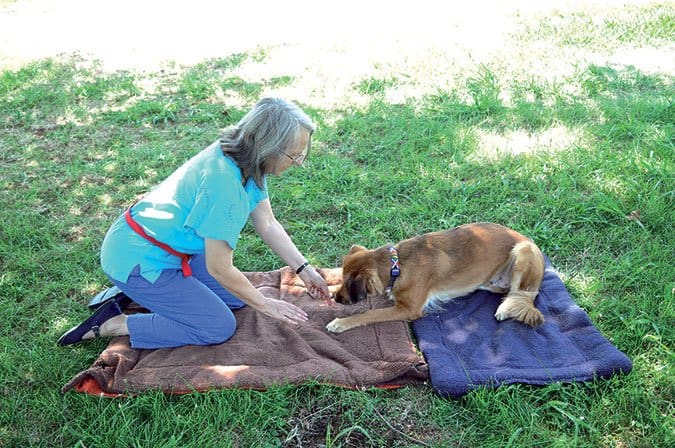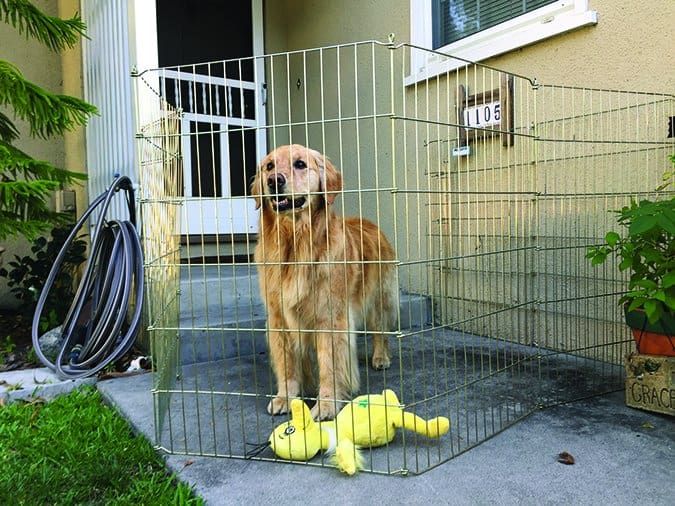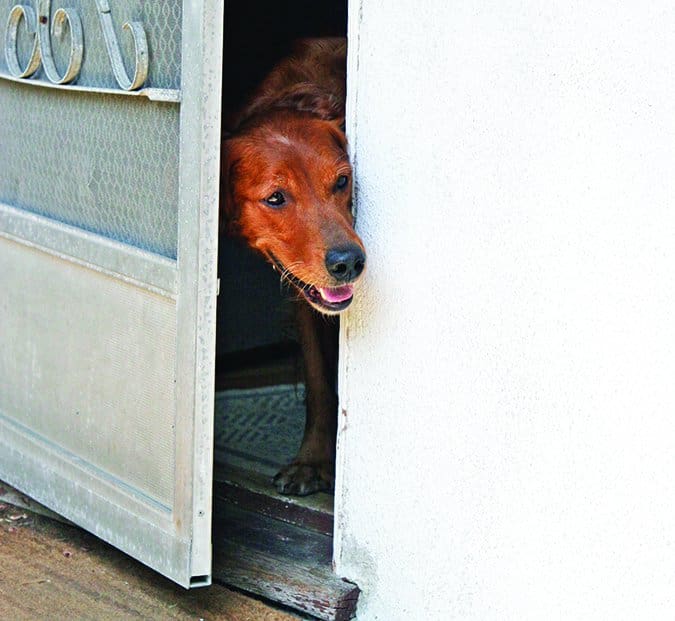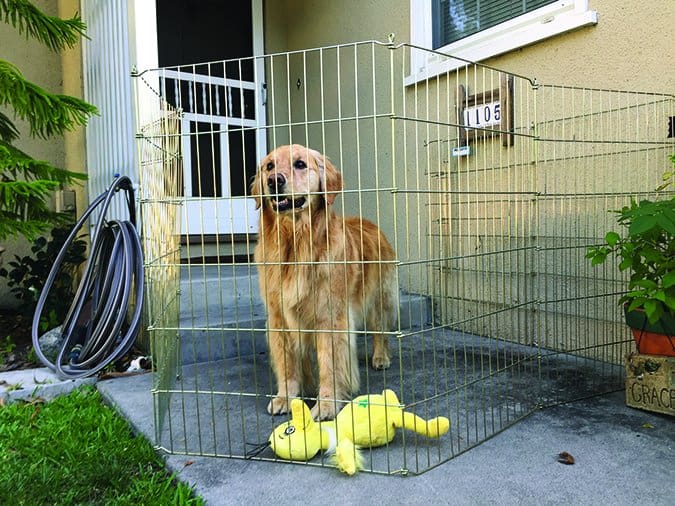COGNITIVE LEARNING FOR DOGS: OVERVIEW
1. Get cognitive with your dog. Check out the possibilities and play with the ones that appeal to you.
2. Find a dog training professional in your area who offers classes or instruction in canine cognition learning.
3. Give your dog opportunities to make choices and observe his selections; you might learn something about him that you never knew!
There was a time, centuries ago, when scientists and philosophers told us that animals don’t feel pain. Of course, we know now how wrong and cruel that was, and I doubt there’s a Whole Dog Journal reader out there who would try to argue that dogs don’t feel pain.
Then we were told that humans are the only species that make and use tools. Oops, wrong again. A quick online search on “Animals, Tools” finds multiple intriguing articles and videos about a multitude of various animals that make and use tools, including insects, birds, mammals, and more.
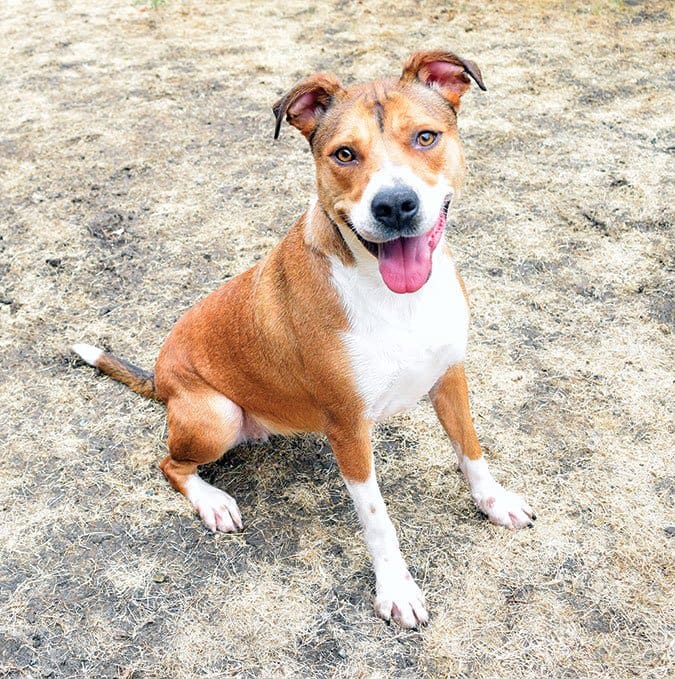
Next, we were warned that if we credited “human” emotions to non-human animals we were engaging in anthropomorphism, defined as “the attribution of human traits, emotions, and intentions to non-human entities.” It’s now pretty widely accepted that many other animals, including dogs, share much the same range of emotions that we do, and in fact that it’s pretty arrogant of us to claim them as “human” emotions. Think about it. Can your dog be happy? Sad? Frightened? Worried? Those are emotions.
In our apparently endless quest to prove our species superior to all others who walk this earth, even as those other dominoes fall, we have long clung stubbornly to the belief that dogs and other species were seriously deficient in the cognition arena. Defined as “perception, reasoning, understanding, intelligence, awareness, insight, comprehension, apprehension, discernment” (and more, depending on the source), cognition also includes the ability to grasp and apply concepts, and “theory of mind” – the ability to recognize and understand the thoughts of others.
Academic Discoveries in the Cognitive Ability of Dogs
Fifteen years ago, you wouldn’t have found the words “canine” and “cognition” in the same sentence. Today, following on the heels of a blossoming interest in animal cognition in the field of behavioral science, there are canine cognition researchers and laboratories springing up all over the world. Among the most notable: Adam Miklosi’s “Family Dog Project” at Eötvös Loránd University, in Budapest, Hungary; the Horowitz Dog Cognition Lab at Barnard College in New York City (with Julie Hecht and Alexandra Horowitz); the Clever Dog Lab at the University of Vienna, in Austria (Zsofia Viranyi and Friederike Range); and the Duke Canine Cognition Center at Duke University in Durham, North Carolina (Brian Hare).
You can find a more complete list of Canine Cognition research centers at Patricia McConnell’s blog on the subject. Suffice it to say, it’s happening all over the place.
So what does this mean for the regular dog owner? The knowledge gained and shared by canine cognition researchers can inspire your local forward-thinking dog training and behavior professionals to introduce new and interesting activities in their dog training programs.
You can also access a growing body of information that can lead you to fascinating things you can do with your own dog in the comfort of your own home. Brian Hare, PhD, who co-authored The Genius of Dogs with his wife, Vanessa Woods, created the citizen science Dognition program, which offers a cognition assessment tool for your dog and a new cognition game you can do with your dog each month. (See “The Dog’s Mind,” May 2013.) Our new and growing understanding of canine cognition can move the entire dog training profession toward a more enriched world that better meets the needs of our canine companions.
Early Cognition Fun
Here at Peaceable Paws (my training center in Fairplay, Maryland), we have been following the canine cognition revolution with great interest. One of the first glimmers of a practical application of our dogs’ cognitive abilities came with Claudia Fugazza’s “Do As I Do” protocol. Studying under Adam Miklosi in Hungary, Fugazza developed a protocol to teach dogs to imitate human behavior – something it was previously believed dogs weren’t capable of doing. We started offering “Copy That” workshops, and delighted in seeing dogs master the art of imitation.
The training world has also embraced the cognitive concept of choice for our canine pals. (See “Training A Dog to Make Choices,” November 2016.) To quote psychology professor Dr. Susan Friedman, “The power to control one’s own outcomes is essential to behavioral health.” Acknowledging that dogs often have very little choice in their lives, trainers have begun teaching a “You choose” cue, encouraging clients to find more ways of offering their dogs a choice. Learn how to play “You Choose” here.
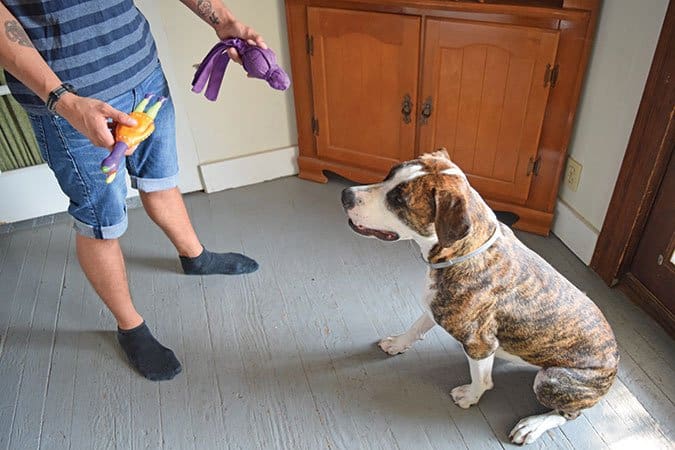
Discrimination Games for Building Canine Cognition
Many cognition games involve the concept of “discrimination” (selecting one designated object from other similar ones) and “fast mapping” (quickly learning the names of new things and being able to correctly identify them). The famous Border Collie Chaser knows the names of hundreds of different objects and is able to correctly select the one her handler asks for. Even more impressive, if a new object is placed with several that she already knows, when asked for the new object she can correctly select that one and bring it back, using “process of elimination” (she knows all the others and correctly surmises the new word must apply to the unknown object).
Here are some discrimination games you and your dog can play. In each case, we are asking her to grasp a concept – object names, shapes, colors – and apply that understanding to make correct choices:
Object Discrimination
1. Select two objects that your dog likes – a stuffed toy, a ball, a stick. If she already knows the names of the objects, you’re ahead of the game!
2. Name one object, offer it in your hand, pause, and then cue her to touch it with her nose or paw – ie. “Ball, touch!” When she does, click and treat. Repeat several times.
3. Now do the same with your second object – “Teddy, touch!” Click and treat.
4. Now offer both objects at the same time. In order to help her succeed, offer one closer to her, and cue her to touch that one. Repeat multiple times, randomly alternating which one you offer closer to her and ask her to touch. Also switch sides, so the same object isn’t always in the same hand.
5. Gradually decrease the offset of the target object until you can offer them both to her at the same distance, and she will consistently touch the one you ask her to touch.
6. Now repeat the process with the objects on the floor, again starting with the target object closer to her to help her succeed, until she can touch either requested object consistently and correctly with both objects the same distance away.
7. Finally, name and add more objects to her repertoire. The sky’s the limit!
Shape Discrimination
For this one, you will need to find or make shapes that are similar in size and color, with the shape being the only difference. We use black shape silhouettes (squares, circles, and triangles) glued onto square white boards.
1. As with the object discrimination game, hold up one shape, name it, and ask your dog to touch it, i.e., “Square, touch!” Repeat several times.
2. Now do the same with your second shape – “Circle, touch!”
3. Now offer both shapes at the same time. In order to help her succeed, offer one closer to her, and cue her to touch that one. Repeat multiple times, randomly alternating which one you offer closer to her and ask her to touch. Also switch sides, so the same shape isn’t always in the same hand.
4. Now repeat the process with the shapes on the floor, propped up against a wall, again starting with the target shape closer to her to help her succeed, until she can touch either requested shape consistently and correctly with both objects the same distance away.
5. Finally, name and add more shapes to her repertoire.
Color Discrimination
This one can be a little tricky, since dogs are red-green color-blind, like some humans. Blue looks like blue to them, yellow looks like yellow, and black looks like black. Greens and oranges also look “yellow-ish,” while reds look brown or tan. When we teach colors we use colored paper plates and start with blue and yellow, since we know dogs can distinguish those. We then use red for our third color, since whatever it looks like to the dog, we know it is different from blue or yellow. The process is essentially the same as the previous two discrimination exercises.
1. Hold up one color, name it, and ask your dog to touch it, i.e., “Blue, touch!” Repeat several times.
2. Now do the same with your second color – “Yellow, touch!”
3. Now offer both colors at the same time. In order to help her succeed, offer one closer to her, and cue her to touch that one. Repeat multiple times, randomly alternating which one you offer closer to her and ask her to touch. Also switch sides, so the same color isn’t always in the same hand.
4. Repeat the process with the colors on the floor, again starting with the target color closer to her to help her succeed, until she can touch either requested color consistently and correctly with both the same distance away.
5. Finally, name and add red to her repertoire.
And what then? You can get creative and mix them up. See if she can learn to select the red balls from a pile of red and blue ones. Teach her the names of the rooms in your house and ask her to bring the yellow Frisbee to you from the bedroom. Teach her the names of family members and ask her to take the blue teddy to Dad in the living room.
Reading, Writing, ‘Rithmetic
No fooling – taking cognition one step farther, it really is possible to teach dogs to read, count and even write. We’ve touched on canine reading before (See “Teaching Your Dog to Read,” October 2006), but here’s a quick rundown of how to start:
1. Make two white signs that are identical in size and shape, with the word “SIT” in large black letters on one sign, and the word “DOWN” on the other.
2. With your dog standing in front of you, hold up the “SIT” sign, pause, and verbally cue your dog to sit. Repeat until you can hold up the sign and he sits without you having to say “Sit.” He now thinks holding up a white square with black squiggles on it is a cue for “Sit.”
3. Now hold up the “DOWN” sign in the exact same position you previously held up the “SIT” sign, and verbally cue your dog to down. Repeat until you can hold up the sign and he lies down without you having to say “Down.” He now thinks holding up a white square with black squiggles is the cue for “Down.”
4. Now vary which sign you hold up in the exact same position, pause and cue the appropriate behavior, until you see that your dog is beginning to offer the correct behavior in response to whichever sign you hold up. Your dog is reading – if recognizing that one set of squiggles means he should sit, and the other means he should lay down.
5. If you want to take it further, make additional cue cards for behaviors your dog knows, and use the same procedure to teach him new words.
What about writing and arithmetic? Ken Ramirez, former head curator at the Chicago Aquarium and current Executive Vice President and Chief Training Officer of Karen Pryor Clicker Training, has taught his dog to count to 14. It’s too complicated to explain here, but you can read Ramirez’s description of the amazing project here.
Emily Larlham of Dogmantics Dog Training in San Diego, California, demonstrated her dog’s ability to write words with a marker held in his mouth to a dumbfounded crowd of dog trainers at last year’s Pet Professional Guild Summit in Tampa, Florida. I kid you not. There is still so much more to learn about our dog’s cognitive abilities. The sky truly is the limit.



